Recently, on BullionStacker.com, where I frequently buy, sell, and trade silver and gold with other members, it was brought to my attention that an item that I had sold might have been a counterfeit. http://reviews.ebay.com/Beware-of-Fake-Engelhard-Silver-Rounds-1?ugid=10000000100176930 I don't remember where I obtained these coins, but I deal through what I view as reputable sources. I have bought similar coins from several other members, as well as for years upon ebay, so in essence, establishing provenance is impossible. I offered a refund or an exchange, and the issue is still in discussion.
Several points arise from this. It is contingent upon you as the seller, to demonstrate integrity and offer compensation to the buyer if your reputation is important to you. I know, in my instance, I plan to continue as a member for years on the various internet venues I haunt, and I am not willing to tarnish my image and be known as a scam artist, merely for a few hundred dollars. Send back those twelve 1984 Engelhard Prospectors, I'd rather eat their cost then reap my just dessert if I didn't.
One issue that raises it's ugly head from this fiasco is this. Do I trust my buyer? How do I know he didn't get duped by someone else he has no recourse for recovery from, and is now telling me that the rounds were provided by me and me alone? On ebay, I could definitely see that being an issue, as a buyer might purchase a roll unsuspecting of their authenticity, and upon receipt merely open the lid and admire the top round without further disturbance, to avoid leaving fingerprints.
Months, or even years later, one's suspicion might become aroused when a flurry of news items regarding Chinese counterfeits hit the bullion stacking universe. You go to examine your hoard, thinking smugly "well, I know mine are all good." You weigh them, expecting the industry standard of 31.1 grams, or at worst a variance of no more than plus 0.1 gram in excess. To your horror, you realize that most if not all of your Prospectors weigh 30.9 grams or less, which could well be a tip-off they're fakes. http://www.infobarrel.com/Beware_of_fake_silver_bullion
How could this happen? Well, the counterfeits are getting that good! They're fooling dealers who don't test their silver content, or check their weight, because visually, they're nearly indistinguishable from the Real McCoy. Sure, you feel a sense of chagrin that you were duped, but even the so-called experts fall victim to the same scam, so find solace in that, if you can. But then, what does a defrauded buyer do? If he can't pinpoint who he bought them from, then will any scapegoat do? How could someone prove that you were the one who sold them the rounds?
I can foresee this becoming a problem on bidding venues like ebay. There are unscrupulous people in the world, and should someone find themselves holding the short end of the stick, how hard would it be for them to purchase a like article on ebay, then upon receipt return the counterfeits and demand a refund? As fakes become more ubiquitous, you can be sure this will occur. The seller, to maintain their feedback intact, will accept the return of the fakes and refund the money involved, never knowing, with certainty, if he is himself a subsequent victim of duplicity.
Thankfully, in this case, I have no doubt that the rounds were once mine, although I am unable myself to determine where in turn I got them from. In this instance, the buyer and I have conducted numerous transactions in good faith, and I had not the slightest inclination to doubt him when he expressed his doubts to me. Sure, I was dismayed, but there is no way a seller, wishing to maintain their integrity, can in any way challenge an honorable buyer in this situation. A resolution is in the works, one that we both consider satisfactory.
This situation raises ethical and philosophical issues. Two more points, then I will let the matter rest. You know what's ironic? These fake silver rounds are no different than Federal Reserve Notes. Backed, as they are, by no more than "the full faith and credit" of the United States Government, they circulate freely and have value. As long as you think they have worth, they do! It's only when you become disillusioned, that the individual (or the public) will scramble to abandon them.
Fakes are, beyond doubt, circulating widely without the knowledge of the public, and thus for all intents and purposes have the same value as real silver, until one is tested and determined to be counterfeit. And the same holds true with the value of our currency. It is being tested now, and found lacking in purity. Were it a coin, such debasement would be apparent to all, as since the founding of The Federal Reserve in 1913, our dollars have lost nearly 98% of their purchasing power.
If you want to enjoy a teaching opportunity with your children, search images for advertising circulars from the Twentie's and Thirtie's. You'll find hundreds of pictures of early century posters and placards, newsprint and magazine spreads that will tout the products of the day. Aside from laughing at the artwork, you can point out how inexpensive items once were. The kids will giggle and scoff, although I seriously doubt, after due consideration, that you'll feel the same. What The Fed has wrought is really no laughing matter, rather one more suited to induce nausea.
Finally, does the emergence of widespread counterfeiting offer an opportunity to some enterprising individual? Each of us is susceptible to being deceived by an authentic looking imposter. Why doesn't someone come up with a wallet-sized Identikit that could hold a gram scale and known fakes of such items as Kooks and Pandas, Koalas and Maple Leafs, Prospector's and American Silver Eagles? It would not even need to contain the actual fakes, but merely high quality images of them, side by side with real rounds, pointing out tell-tale signs of fraudulence.
I, for one, would endorse adoption of the use of such a tool, and would consider myself fortunate were I able to obtain one. The Fisch tool set http://www.fisch.co.za/home.htm renders detecting counterfeit gold coins more simple, we need someone with industry to step forward with an idea such as mine, or its derivative, so that the plethora of fakes that are circulating as silver bullion can be detected and destroyed, their fabricators identified and prosecuted for criminal acts. Too bad we couldn't as easily find someone more qualified to pilot our national helicopter, Ben.
Buy Silver. Buy Gold. Save Copper. Start Now.
Saturday, January 28, 2012
Subscribe to:
Post Comments (Atom)



















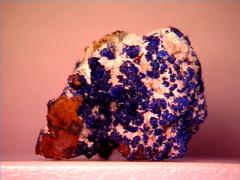





























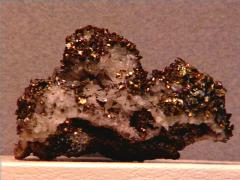




































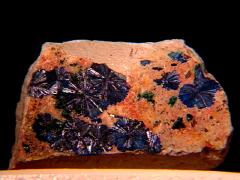

























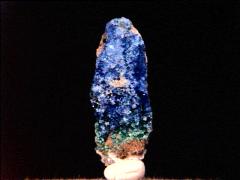




























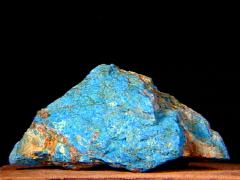








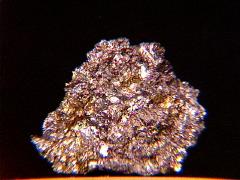







No comments:
Post a Comment